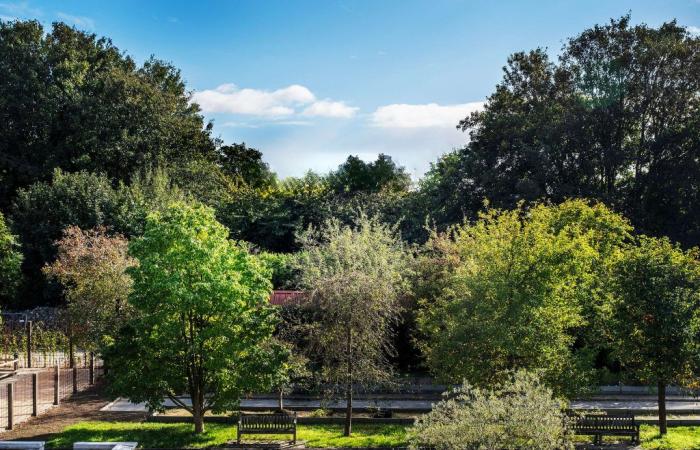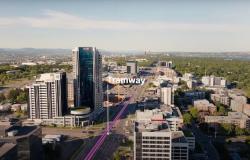Nature and trees are alarmingly absent from Belgian towns and villages, particularly in less affluent municipalities and neighborhoods. This is what emerges from a data analysis carried out by Greenpeace Belgium in view of the local elections of October 13, 2024. Genk is the best rated city in terms of urban nature, while Mouscron finishes at the bottom of the ranking.
The analysis was carried out using data mapped by DataLab, a collective of volunteer and independent scientists supported by the King Baudouin Foundation. The interactive map shows access to urban nature for each building in Belgium according to the 3-30-300 rule of Dutch professor Cecil Konijnendijk.
Belgium is still far from respecting the 3-30-300 rule.
In 101 Belgian municipalities – representing 1.3 million people – not a single building complies with the 3-30-300 rule. In 72% of municipalities, less than a tenth of buildings comply with the 3-30-300 rule. There are therefore millions of people who could be in better health and have a better quality of life if we made a massive effort to green our neighborhoods now and during the next legislature.
The trees are unevenly distributed.
The data shows us that wealthier municipalities perform better when it comes to the 3-30-300 rule, and even within many municipalities we see that wealthy neighborhoods perform better in terms of spaces greener than poor neighborhoods. Whatever the cause, this data reveals a significant injustice. Indeed, the unequal distribution of trees and green spaces in turn leads to an unequal distribution of their health benefits. Poor neighborhoods will be more affected by heat islands, and these same people will have to travel further to find coolness. This problem must be treated as a priority by the municipal authorities!
The glaring lack of green spaces and tree cover is the main source of concern.
At least one million Belgians do not even have a 0.2 ha mini-park 300 meters from their home, and this deficiency is particularly pronounced in Antwerp, in several municipalities in the Brussels-Capital Region, in Mouscron , in Tournai, in Ath and in Roeselare. At the same time, the proportion of canopy cover for almost the whole of Belgium is catastrophically low, and only a minority of municipalities, mainly rich, have sufficient tree cover. It is in Mouscron, Verviers, Tournai, Liège, Ostend, Namur and Roeselare that this lack is most obvious.
The situation is actually much worse.
The method of calculating buildings that meet the 3-30-300 rule leads to a strong overestimation of the results. This is due to the limitations of publicly available data. For example, the rule of 300 requires that everyone within a radius of 300 meters has a park of at least 0.5 ha, but in our mapping, the rule of 300 was calculated based on a minimum area of 0.2 ha. In reality, Belgium is therefore much further from the necessary healthy and green living environment than these results suggest.
However, the solution is simple: plant an abundance of trees and create, extend and connect parks together.
With small actions, we can move quickly towards healthy, climate-friendly cities. Municipalities, but also citizens, can identify at a glance on the map the streets that need to be greened and planted with trees and the neighborhoods that urgently need a park. And as the growth of a tree is very slow, these land developments must be planned as soon as possible!






